Object of the Week: Basket in the shape of a boat
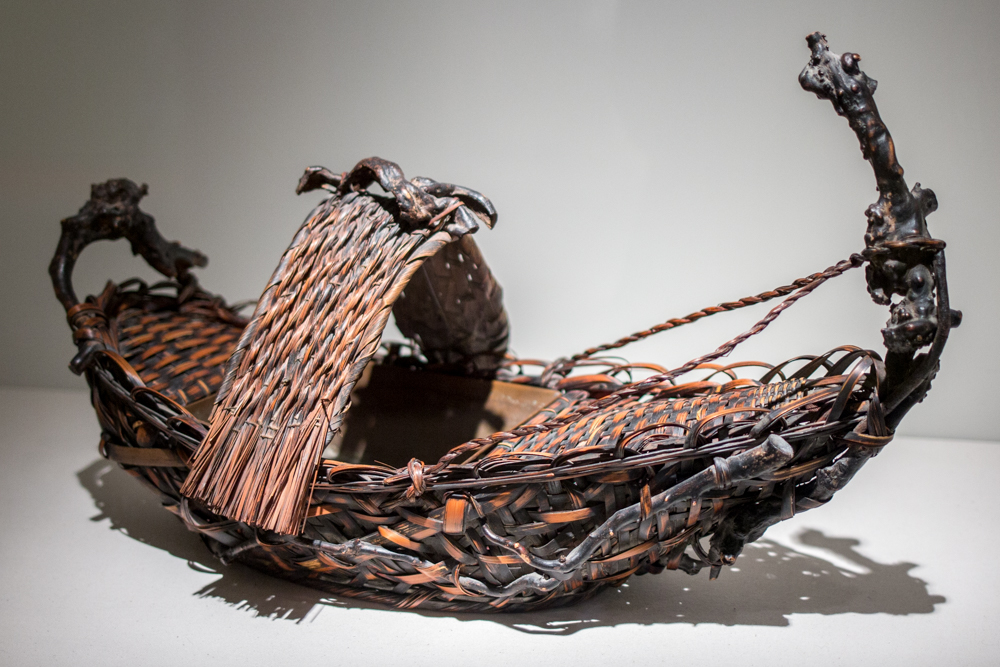
Most days at SAM, this bamboo Basket in the shape of a boat draws attention only for its remarkable artistry and creativity. The maker shows an ability to see the life inside the bamboo, and then to channel it toward the creation of a symbol—the boat—and a form—the basket. The medium seems to effortlessly transform: In places it’s gnarled like wood, or frayed like raffia, or braided like rope, always contributing to the total picture of boat-ness. The piece was produced in Japan during a 20th century revival of interest in traditional Japanese craft, when bamboo baskets gained an elevated importance in the country’s artistic production. As fine an artistic example as it is, this week, it takes on another meaning as a reminder of a dark period in U.S. and world history.
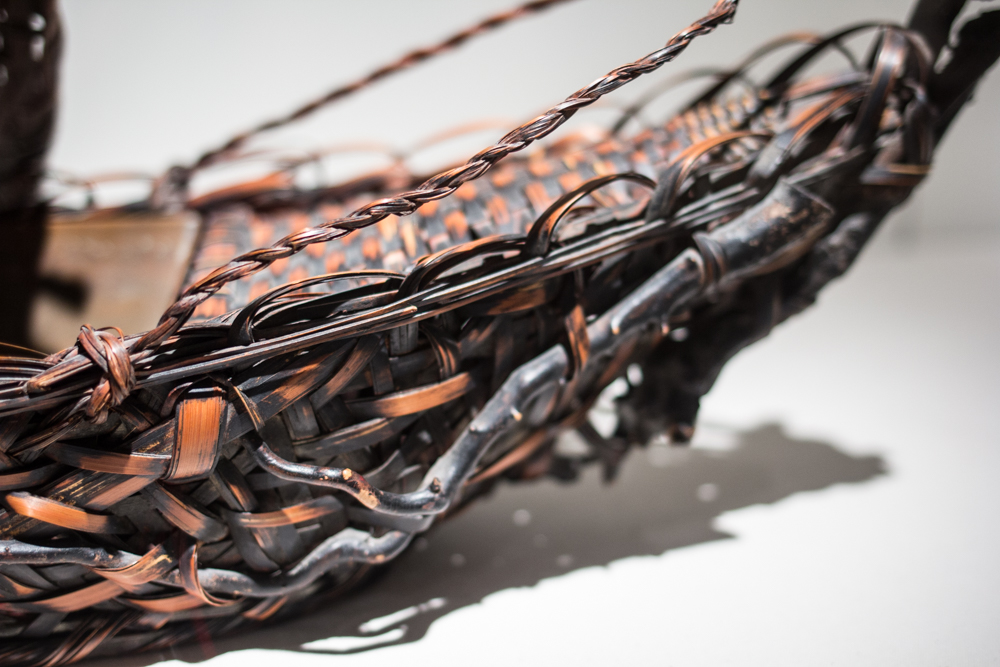
The day after the Japanese attack on Pearl Harbor, President Franklin Delano Roosevelt issued a now famous Declaration of War address (you can listen to it here):
Yesterday, December 7th, 1941—a date which will live in infamy—the United States of America was suddenly and deliberately attacked by naval and air forces of the Empire of Japan.
The United States was at peace with that nation and, at the solicitation of Japan, was still in conversation with its government and its emperor looking toward the maintenance of peace in the Pacific.
Indeed, one hour after Japanese air squadrons had commenced bombing in the American island of Oahu, the Japanese ambassador to the United States and his colleague delivered to our Secretary of State a formal reply to a recent American message. And while this reply stated that it seemed useless to continue the existing diplomatic negotiations, it contained no threat or hint of war or of armed attack.
It will be recorded that the distance of Hawaii from Japan makes it obvious that the attack was deliberately planned many days or even weeks ago. During the intervening time, the Japanese government has deliberately sought to deceive the United States by false statements and expressions of hope for continued peace.
The attack yesterday on the Hawaiian islands has caused severe damage to American naval and military forces. I regret to tell you that very many American lives have been lost. In addition, American ships have been reported torpedoed on the high seas between San Francisco and Honolulu.
Yesterday, the Japanese government also launched an attack against Malaya.
Last night, Japanese forces attacked Hong Kong.
Last night, Japanese forces attacked Guam.
Last night, Japanese forces attacked the Philippine Islands.
Last night, the Japanese attacked Wake Island.
And this morning, the Japanese attacked Midway Island.
Japan has, therefore, undertaken a surprise offensive extending throughout the Pacific area. The facts of yesterday and today speak for themselves. The people of the United States have already formed their opinions and well understand the implications to the very life and safety of our nation.
As Commander in Chief of the Army and Navy, I have directed that all measures be taken for our defense. But always will our whole nation remember the character of the onslaught against us.
No matter how long it may take us to overcome this premeditated invasion, the American people in their righteous might will win through to absolute victory.
I believe that I interpret the will of the Congress and of the people when I assert that we will not only defend ourselves to the uttermost, but will make it very certain that this form of treachery shall never again endanger us.
Hostilities exist. There is no blinking at the fact that our people, our territory, and our interests are in grave danger.
With confidence in our armed forces, with the unbounding determination of our people, we will gain the inevitable triumph — so help us God.
I ask that the Congress declare that since the unprovoked and dastardly attack by Japan on Sunday, December 7th, 1941, a state of war has existed between the United States and the Japanese empire.
World War II brought about all kinds of terrible things, including racial conflict. Executive Order 9066, signed by President Roosevelt on February 14, 1942, authorized military authorities to exclude “any and all persons” from designated areas of the country as necessary for national defense. In practice, the government targeted only Japanese resident aliens and Japanese Americans. The U.S. government uprooted more than 120,000 Americans of Japanese ancestry from homes and placed them under armed guard for up to four years. Sixty-five percent of these people were American citizens (these statistics according to the Smithsonian Institute).
A local connection to that dark time exists, too: Exclusion Order Number 1, issued on March 24, 1942, dictated that all Japanese resident aliens and Americans of Japanese ancestry on Bainbridge Island be removed under military guard. Herded into one of 10 camps in geographic isolation, these and other Japanese Americans endured the war in terrible conditions until the mass imprisonment came to an end in December of 1944. The formal ceremony that communicated Japan’s surrender took place on September 2, 1945, aboard the USS Missouri in Tokyo Bay.
There was a lot of healing to be done, to say the very least, and in the years following the war, SAM played its role in bringing about a rapprochement between the Japanese American community and the many other people groups that make up our nation.
Already by the fall of 1949, SAM assistant director Sherman Lee was in communication with the Osaka-based Fujikawa Gallery about acquiring historical Japanese art. The gallery certainly had in mind that brokering art deals would contribute to a development of mutual understanding between Japan and the U.S.:
“As you know, we Japanese are now making great efforts with renewed stamina to rehabilitate our post-war country as a genuinely cultural one, having it always in view to contribute towards the establishment of world peace. It is our sincere wish, above all, to have you fully understand and appreciate our Japanese fine arts, thereby to promote our international relationship of goodwill and the interchange of cultures on both sides.”
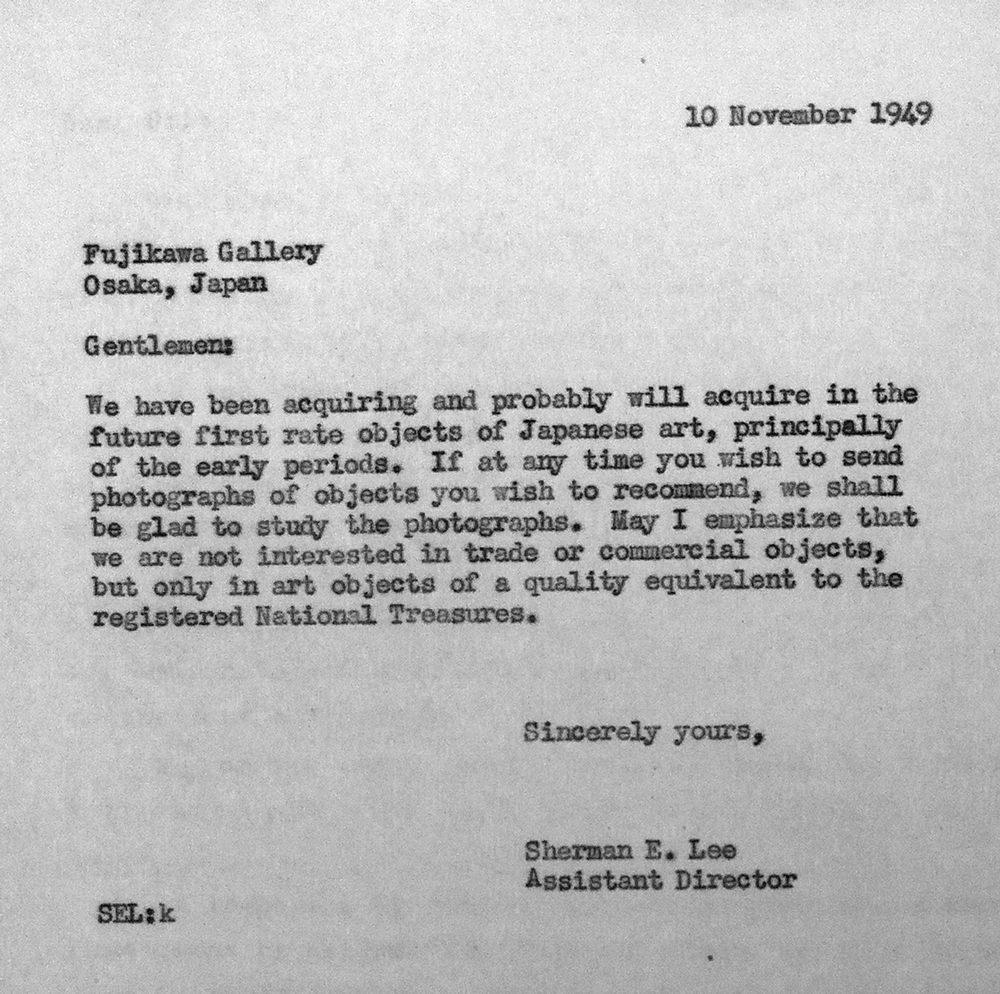
Fujikawa’s response is below.
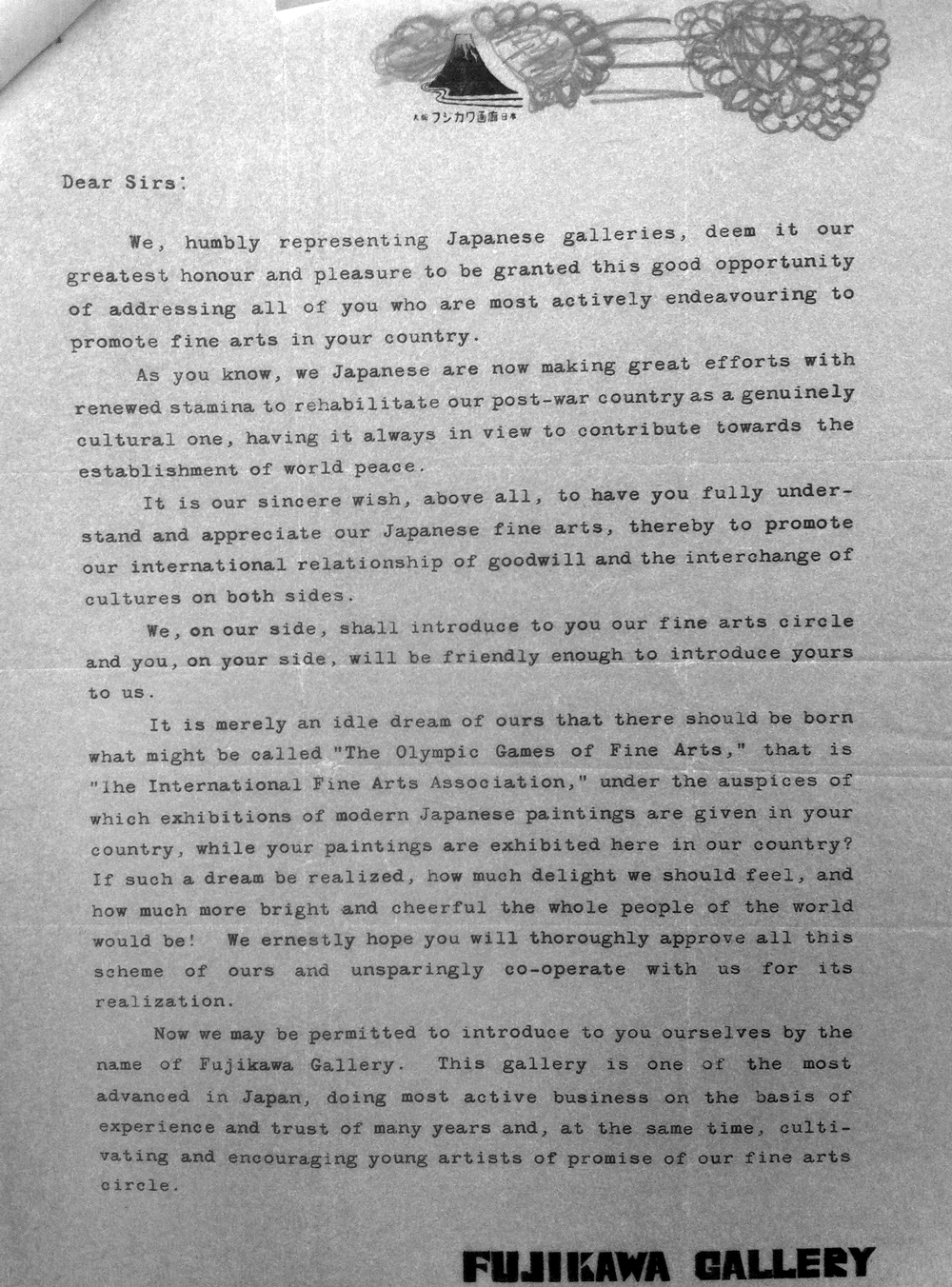
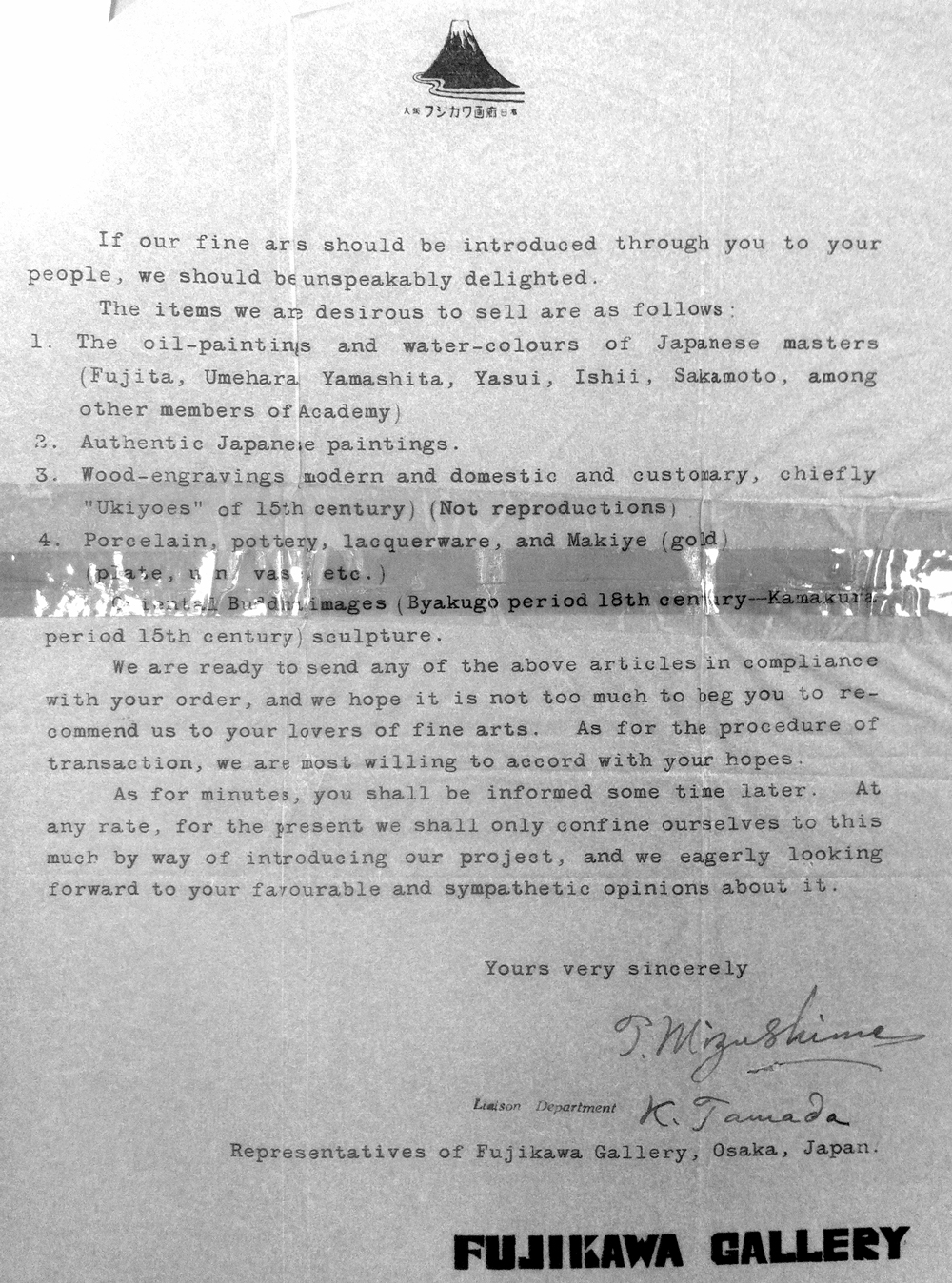
For Lee’s and SAM’s part, engaging with Fujikawa at least demonstrates a lack of the xenophobic fear that inspired war-time decisions like the internment camps.
In the summer of 1951, SAM hosted its first post-war exhibition of Japanese art. From May 9 through June 3 of that year, visitors to the Volunteer Park museum could enjoy Paintings by Japanese Children, a show organized by the Japan-American Society of the Younger Generation in Japan. Two years later, an exhibition that was quite a bit more ambitious came to Seattle.
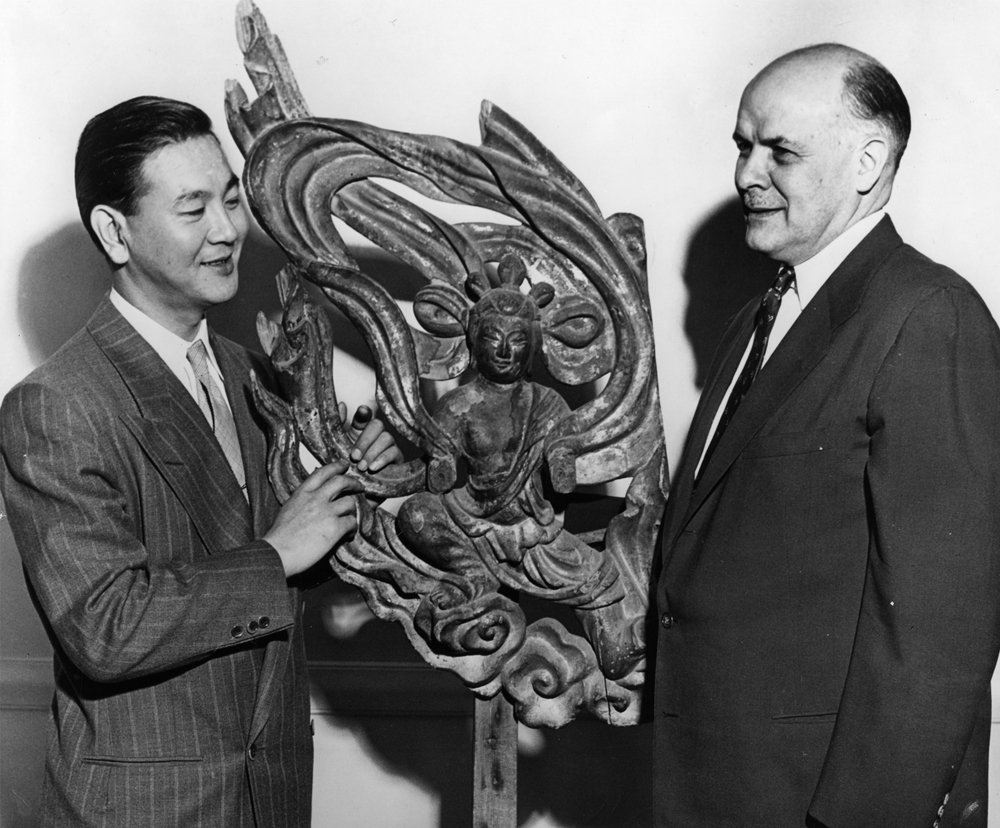
The Official Japanese Exhibition of Painting and Sculpture, on view July 9 through August 9, 1953, marked a very important moment for the museum, as it became the site of a highly publicized international exhibition. In its 20 years, SAM had previously hosted one such international show—on the art of India, in 1944—but the 1953 Japanese exhibition became its most important display yet. The museum was open seven days a week for the running of the show, bringing in paid attendance of over 57,000 and a total attendance of more than 73,000. In order “to help defray the heavy expense of this exceptional exhibition,” director Dr. Richard Fuller imposed a stiff charge of an additional 50 cents for entry. Below, you can see Dr. Fuller with his wife Betti (they were married in 1951) and visiting dignitaries, accompanying a truck full of the Japanese artworks and, in a darn questionable move, drawing all kinds of attention to their cumulative value.
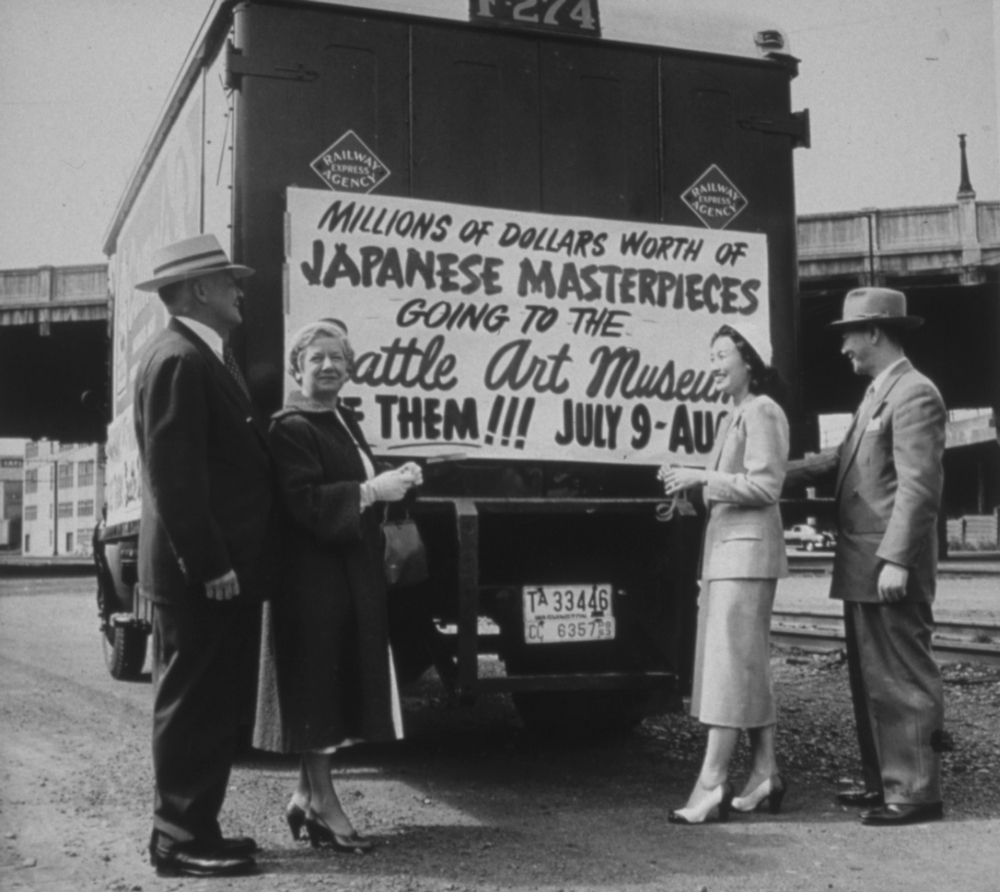
More important than its effect of raising the museum’s visibility on the local and international stages, the 1953 exhibition communicated a sense of solidarity. At a time when racist thinking toward Japanese Americans definitely lingered, the show offered a peace branch, encouraging people from diverse backgrounds to engage and enjoy Japan’s fascinating art culture.
From my perspective, that remains the hope for SAM today: to be a meeting place for people where, through thoughtfully and artfully made objects, we can learn to appreciate each other better.
—Jeffrey Carlson, SAM Collections Coordinator